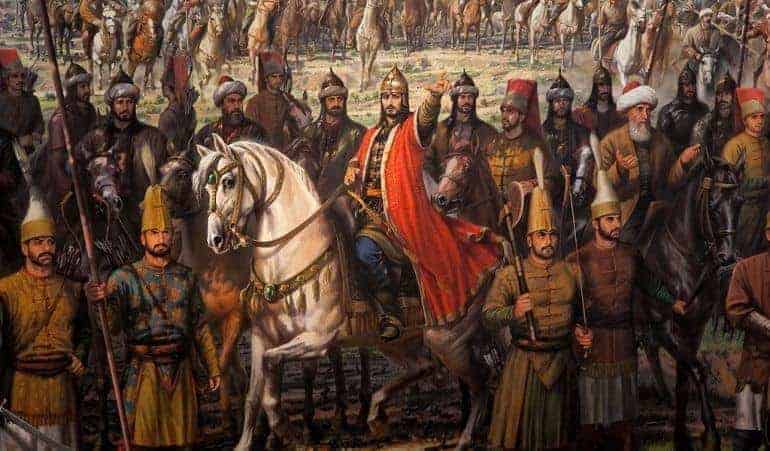The Ottoman Empire was founded by Osman, an Oghuz Turkish tribal leader at the end of the 13th century. The Turks came to Europe in 1354 and created one of the world’s most powerful states in the 15th and 16th centuries. After taking Byzantine territory in Anatolia in the 14th century, the Ottomans finally took the city of Constantinople in 1453 and renamed it Istanbul.
By 1520, the Ottomans were the clearly the leaders of the Muslim world and under Suleiman ‘the Magnificent,’ they threatened to take over Western Europe. Only stubborn resistance from the Hapsburg emperors prevented Austria from being conquered and by the end of the 16th century, Ottoman leaders focused on defense rather than further expansion. Defeat in Austria towards the end of the 17th century marked the limit of their territorial gains in Western Europe. Further losses in the 18th and 19th centuries led to a period of reform and modernization known as Tanzimat. The Ottoman Empire gradually lost territory in the Balkans throughout the 19th century, and it finally fell in 1922 when it was replaced by the Republic of Turkey. In this article, I will look at six significant battles that shaped the Ottoman Empire before World War I.

1: Battle of Chaldiran – 1514
This was a major battle as it ended the influence of the Iranian Safavid dynasty over the Turkmen tribes that were rebelling against the Ottomans. Selim I emerged victorious in a power struggle to become ruler of the Ottomans in 1512 and quickly turned his attention to dealing with the Shia Qizilbash who he believed would turn his people against him in favor of Shah Ismael I, the ruler of the Safavids.
Selim had to deal with discontent within his army, and once he learned that the Safavid leader was at Chaldiran, he moved quickly to deal with his enemy. Selim had an army of up to 100,000 men and was better equipped than his rival who boasted a force of up to 80,000. The battle began with Selim employing heavy artillery and Janissaries (elite Ottoman troops) with gunpowder weapons.
Shah Ismael tried to attack the Ottomans on their flanks to avoid the artillery in the middle. He soon discovered just how maneuverable the enemy artillery was as his army suffered heavy losses. The onrushing Safavids had no chance as they only possessed traditional weaponry. Chaldiran was one of the first field battles in history to be won by gunpowder weapons.
The Safavids suffered losses of over 5,000 troops, and within a couple of weeks, Selim captured the enemy capital of Tabriz. However, his Janissaries showed discontent which prevented him from pressing home his advantage. Although Selim was forced to return home after Chaldiran, the Ottomans did annex Eastern Anatolia, and the Shia uprisings ceased.
Ismael’s confidence was permanently shattered after the defeat; matters weren’t helped by Selim capturing two of his wives and an entire harem! He drowned his sorrows in alcohol and stepped away from matters of state. The defeat persuaded the Persians to incorporate firearms, and they used cannons in future battles.

